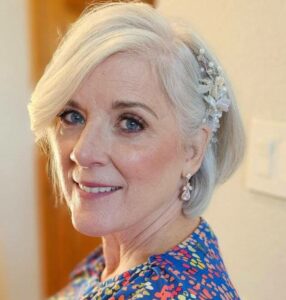I grew up in Bensonhurst, Brooklyn. Our home was three small rooms in back of our family’s linoleum store. Disadvantaged? I didn’t think so. And, now looking back over 60-plus years, I realize how truly advantaged, rich, flavorful and nurturing my world was.
Our store was on 86th Street, the major commercial thoroughfare of Bensonhurst. It is a linear market of mostly family-owned businesses in the shadow of the overhead West End El. The passing trains just add more background urban “music” to the commerce below. Our store was on the south side of the long block between Bay Parkway (22nd Avenue) and 23rd Avenue. This stretch of 86th Street still consists of cheek by jowl open-air produce and schlock markets. Most have space inside for cash registers, dry goods, and more merchandise/produce.
The owners have changed over the years, from Jewish and Italian in the fifties and sixties, to include, now, Korean, Chinese, Egyptian, Arab, Russian, et al. While Asians have conglomerated neighboring businesses into open-air “supermarkets,” at least one Italian family has done the same. Hence, La Vucciria encompasses at three contiguous properties, and on the inside, in addition to Italian favorites such as carciofi (artichokes) and broccoli di rapa (robbies), there is a functioning Russian deli counter, tended by white tunic-clad Russian young ladies. You vant smoked fish? You got it. (Ochin xharascho! Molto bene! That’s Brooklyn.) La Vucciria is aptly named. It means, loosely, “madhouse,” and is the title of Sicilian artist Renato Guttuso’s famous painting of the “palermitano” market, which depicts a scene reminiscent of 86th Street. So, our enclave was, and is, life imitating art, imitating life. A large photographic mural of La Vucciria, the one in Palermo, adorns the Bensonhurst namesake.
Now, fresh produce has always made 86th famous, even before fresh produce was cool and co-opted by the young hipsters by the Brooklyn Bridge and DUMBO—locales that are ten West End stops from Bay Parkway. DUMBO? Not quite Disneyesque, it stands for “Down Under the Manhattan Bridge Overpass.” The West End line goes over the Manhattan Bridge— flanked by the Brooklyn Bridge to the south and the Williamsburg Bridge to the north. Back in the day, you were more likely to find bodies under the bridge than the current, more genteel tourist attractions like picnicking and kayaking.
If you’re picking through produce on 86th Street, when a bunch of new artichokes or string beans is dumped on the stand, you have to fight a gaggle of aggressive ladies (and a few brave, battle-hardened men) on the lookout for the prime specimens. And they also know about positioning, blocking out, and using elbows. Among my late mother’s dear friends, were two never-married sisters, Mary and Rose Seminara, now 96 and 101 years old. On a very cold day when Rose the elder was in her late eighties-early nineties, she was right there with a throng in a produce feeding frenzy.
Their niece Georgette recounted: “Your mom was helping my Aunt Rose pick out string beans. They were picking them out one-by-one, not by the handful, because Mary would have a fit if Rose came home with spotted or rotten beans.” Now, on this bitterly cold day Rose was putting bony, delicate, yet rapacious fingers on the choice specimens. From Georgette:
When the man came and dumped a new crate of string beans over the old ones, my aunt emptied the already full bag and proceeded to start over, and your mom said, “Enough! Rose, you got to be kidding!”
I heard this story from Mom as well as from Georgette, and I could just see Mom saying: “Abbastanza! Ma quando, MAI?!” Roughly translated, “Enough! When will you be done, NEVER?!” Not even Mom could put her numb fingers through another string bean hunt. Now, if they were for her own table, probably a different story.
In much older days Brooklyn was a collection of Dutch farming communities, and efforts to stem urbanization bore no fruit. Old Peter Stuyvesant, New York’s last Dutch governor (1664), probably did a few roll-overs in his grave over the Bensonhurst of my youth. However, this does not mean that today there are no urban gardens. Indeed, I cultivated tomatoes, Swiss chard (bietola, or scarola, depending on who you ask), and cucuzza (goo-GOOTZ, in dialect; a long, sinuous light green squash) in the postage stamp of exposed soil behind our home on 86th Street.
During my adolescence a Sicilian immigrant bought and renovated the house over the back fence. He commandeered neighbors’ terrain, and his backyard looked like a rural garden, complete with a grape trellis and fig trees he had to wrap in tarpaper to over-winter. He encouraged my “farming”, and would often water my plants through the chain-link fence. I was the farmiol (in his dialect, and it sounded to me like farm-eye-OHL).
So, though we of the ‘second-generation’ escaped the ‘hood, our move was in many ways similar to American youth leaving the farm for professions. The Brooklyn of my youth was good, tasty, and sustaining. Sequential generations of immigrant families prospered, and spun off valuable contributors to our American life. Rose, Mary and Georgette are of the talented and accomplished Seminara clan—Sicilians who belie Hollywood stereotypes. Their numbers include dentists, lawyers and doctors. Aurora Seminara, PhD, was a student of 1998 Nobel Prize winner Ferid Murad. Stephanie Seminara is currently Professor of Medicine at Harvard Med School. Earlier in her career Stephanie was able to master human genetics and genomics to identify a “puberty gene” which she called part of “the pilot light of puberty.” Georgette, also, “coulda been a contendah” (apologies to Marlon Brando in On the Waterfront, Director; Sam Spiegel, 1954). However, she chose to devote herself to family, and she has done so admirably.
But, of course, Brooklyn is part of New York, and there is now a strong “reverse migration” back to the city. (‘The City’ actually means Manhattan in Brooklynese.) Georgette married Arthur Adams, of Canton, Ohio: “I met Art after he came out of the Navy (six years—during Vietnam). He went home for a while, and then came to the big city, New York. We met through a friend.”
To me, Arthur has thoroughly demonstrated how the environment can influence the “epi-genome,” so that he is now a full-blown goombah (Brooklyn version of compare, or compatriot). Talk about the confluence of the ’hood and rural mid-America: Arthur is now a conductor for the New York Transit Authority, and pilots the West End Express. (Currently the D, but we all know, and use, the real name.) As he barreled down 86th Street between the 20th Avenue and Bay Parkway stations, he tooted his horn to his bride, who stood waving at him from her 21st Avenue back porch. Georgette and Arthur have since moved to Staten Island. Their Brooklyn home was part of the “rural residue” of Bensonhurst. The ample house occupied less than half of a large lot; so, they could grow tomatoes, basilicó (basil; bah-zilly-GO in dialect), peppers, etc. They even had a chicken—an escapee from a neighbor child’s Easter present. The chick crawled through the fence, and Arthur built a roost for her. Over the last few of her eleven years, she just nestled in with the curled-up dog on the back porch.
Georgette sings to my mother every morning and prays for the health of my daughter as well. My mom used to bring Georgette’s aunts, “the sisters,” the Sunday editions of the Daily News and NY Post and then stay for morning coffee and breakfast, dropping by Georgette’s on the way home. I don’t want to give the impression that Bensonhurst was a strictly Italian enclave. Florie Ehrlich was one of Mom’s best friends. Mom met Florie through Georgette. Georgette and Florie got to know each other through their own mothers—from what I have learned, two women with strong intellect and wills.
Georgette and Arthur are now heroes to their own three children-in-law. The Italian lineage is now yet another ingredient in the protean Brooklyn minestrone, and their grandkids impart flavors of Haiti, Georgia (the ex-Soviet Republic), and other locales, and, yes, it is indeed, all good, tasty, and sustaining.



